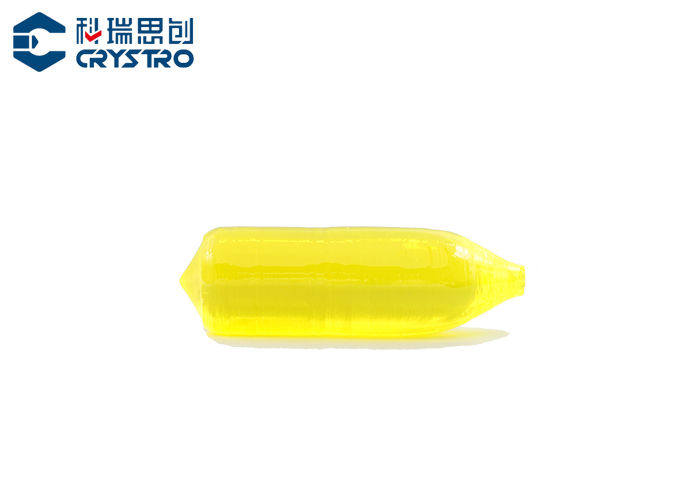In the intricate world of radiation detection, LuAG(Ce) scintillator crystals emerge as stalwart guardians, harnessing the power of luminescence to unveil the presence and properties of ionizing radiation. Comprising lutetium aluminum garnet doped with cerium (LuAG(Ce)), these crystals exhibit extraordinary capabilities that render them indispensable in diverse fields such as medical imaging, nuclear physics, and security surveillance. Let's embark on a journey to uncover the essence of LuAG(Ce) scintillator crystals, exploring their composition, mechanisms, and profound impact on radiation detection.

Composition and Structure
LuAG(Ce) scintillator crystals are crafted through the meticulous fusion of lutetium oxide, aluminum oxide, and cerium oxide via the Czochralski method. This intricate process births a crystalline structure with exceptional purity and uniformity, essential for optimal performance in radiation detection applications.
The introduction of cerium as a dopant imbues the crystal lattice with luminescent properties, priming it to convert incoming ionizing radiation into discernible light signals.
Mechanisms of Action
At the heart of LuAG(Ce) scintillator crystals lies a captivating dance of energy conversion. When ionizing radiation penetrates the crystal, it imparts energy to the constituent atoms, prompting them to transition to higher energy states. As these excited atoms gradually return to their ground state, they release the absorbed energy in the form of photons—a phenomenon known as scintillation.
The presence of cerium amplifies this luminous spectacle, efficiently capturing and channeling the released energy into a cascade of photons, each shimmering with vital information about the incident radiation.
Detection and Analysis
The luminous spectacle within LuAG(Ce) scintillator crystals is but the opening act in a grand symphony of detection and analysis. Surrounding the crystal, an array of photodetectors stands sentinel, ready to capture the radiant emissions and translate them into electrical signals.
Photomultiplier tubes (PMTs) and silicon photomultipliers (SiPMs) are among the esteemed members of this vigilant ensemble, adept at amplifying and converting the photons into tangible electronic pulses. These signals, laden with insights into the energy and nature of the incoming radiation, undergo meticulous scrutiny by sophisticated electronic systems, culminating in a precise characterization of the radioactive source.
Applications Across Frontiers
The versatility and prowess of LuAG(Ce) scintillator crystals extend across a panorama of applications, each demanding precision, sensitivity, and reliability. In the realm of medical imaging, these crystals adorn the frontline of positron emission tomography (PET) scanners and gamma cameras, illuminating the inner workings of the human body with unparalleled clarity.
In the realm of fundamental research, LuAG(Ce) detectors orchestrate experiments in nuclear physics, unraveling the mysteries of atomic nuclei and subatomic particles. Moreover, in the realm of security and surveillance, these crystals fortify the defenses against illicit nuclear materials, empowering radiation portal monitors and handheld detectors with steadfast vigilance.
LuAG(Ce) scintillator crystals stand as beacons of innovation and ingenuity in the domain of radiation detection, illuminating the path towards safer, healthier, and more secure tomorrows. From the intricate dance of energy conversion within their crystalline lattice to the profound impact across scientific, medical, and security frontiers, these crystals embody the relentless pursuit of knowledge and the unwavering commitment to safeguarding humanity against the invisible perils of ionizing radiation.
As we gaze into the radiant depths of LuAG(Ce) scintillator crystals, we glimpse a future where clarity conquers obscurity, and illumination triumphs over ignorance.

